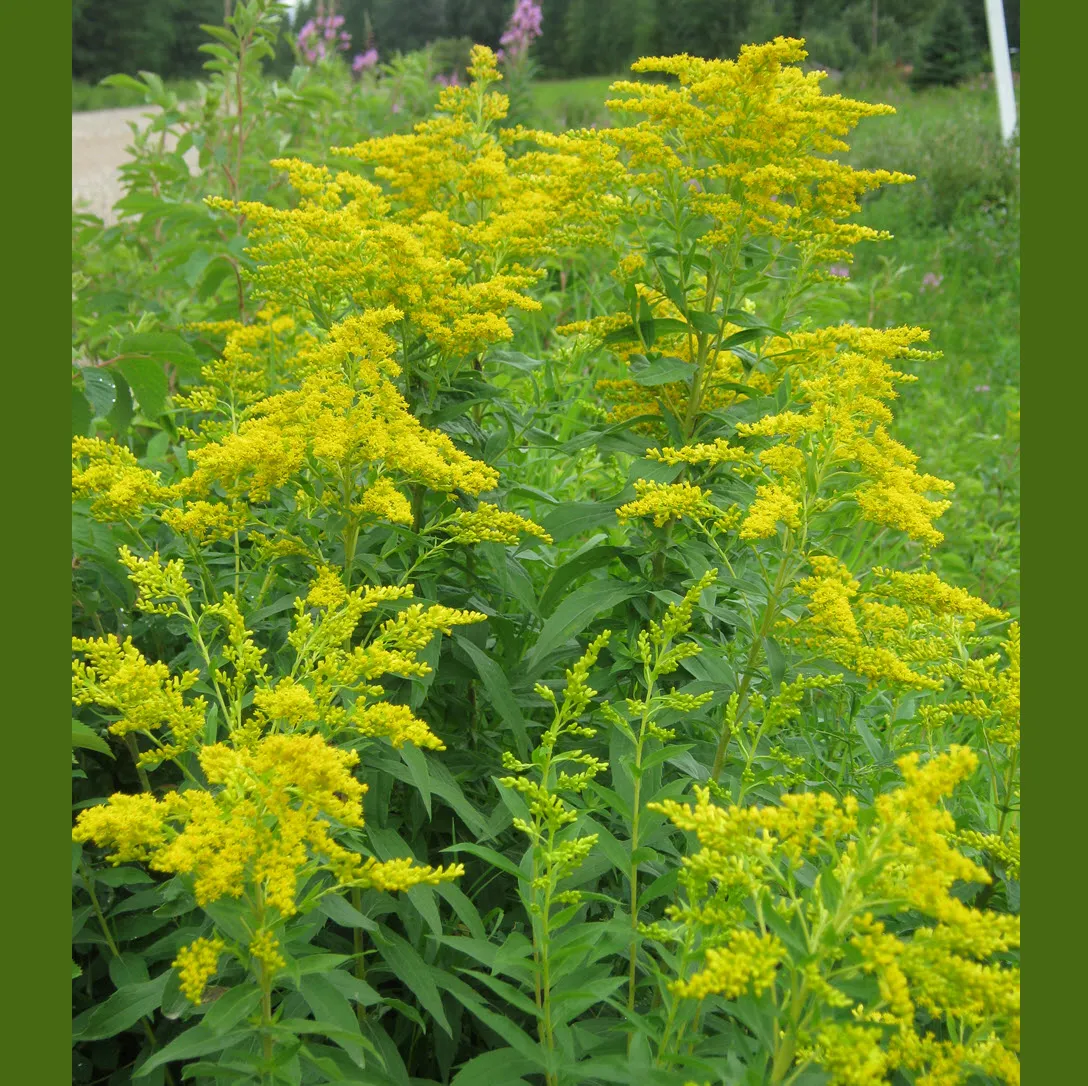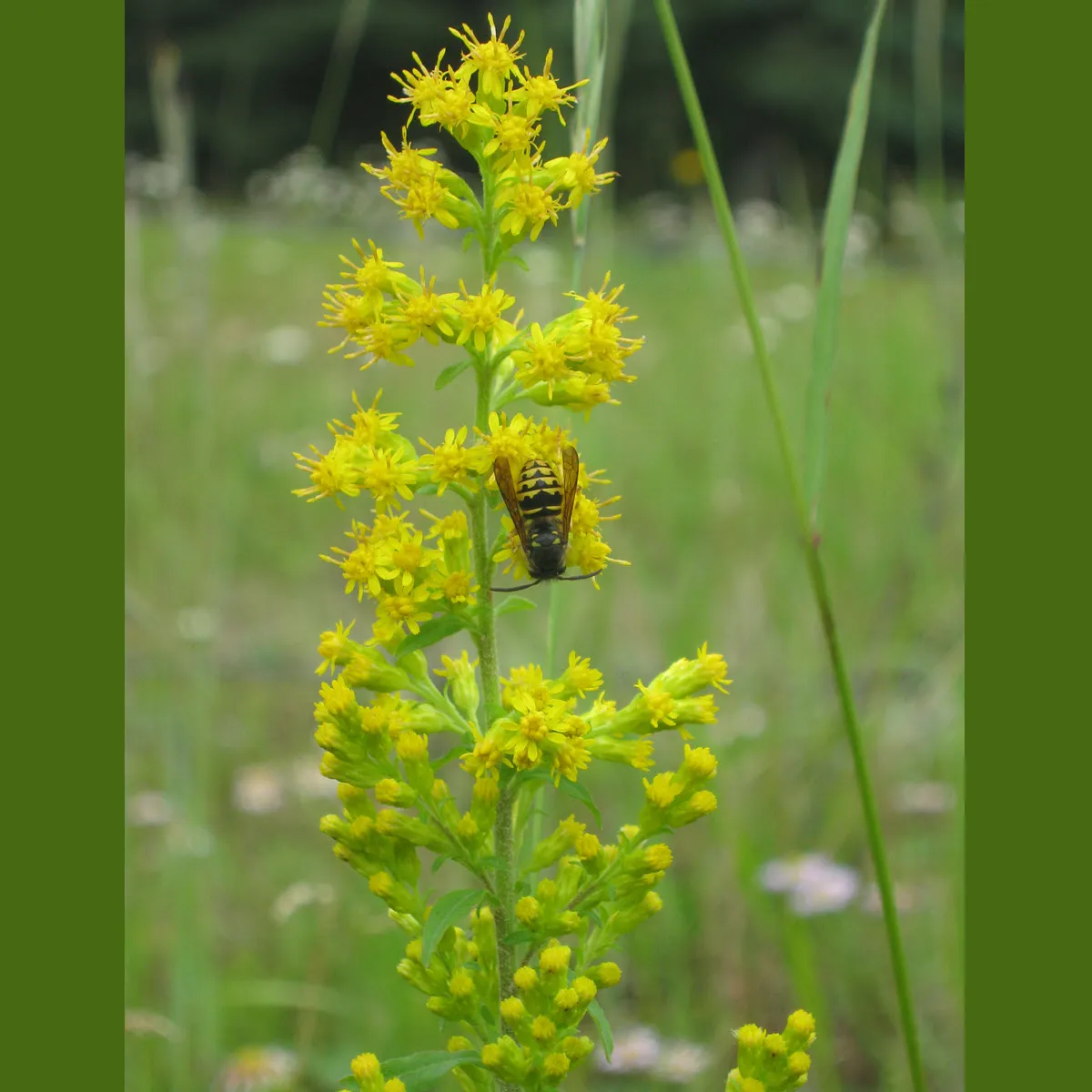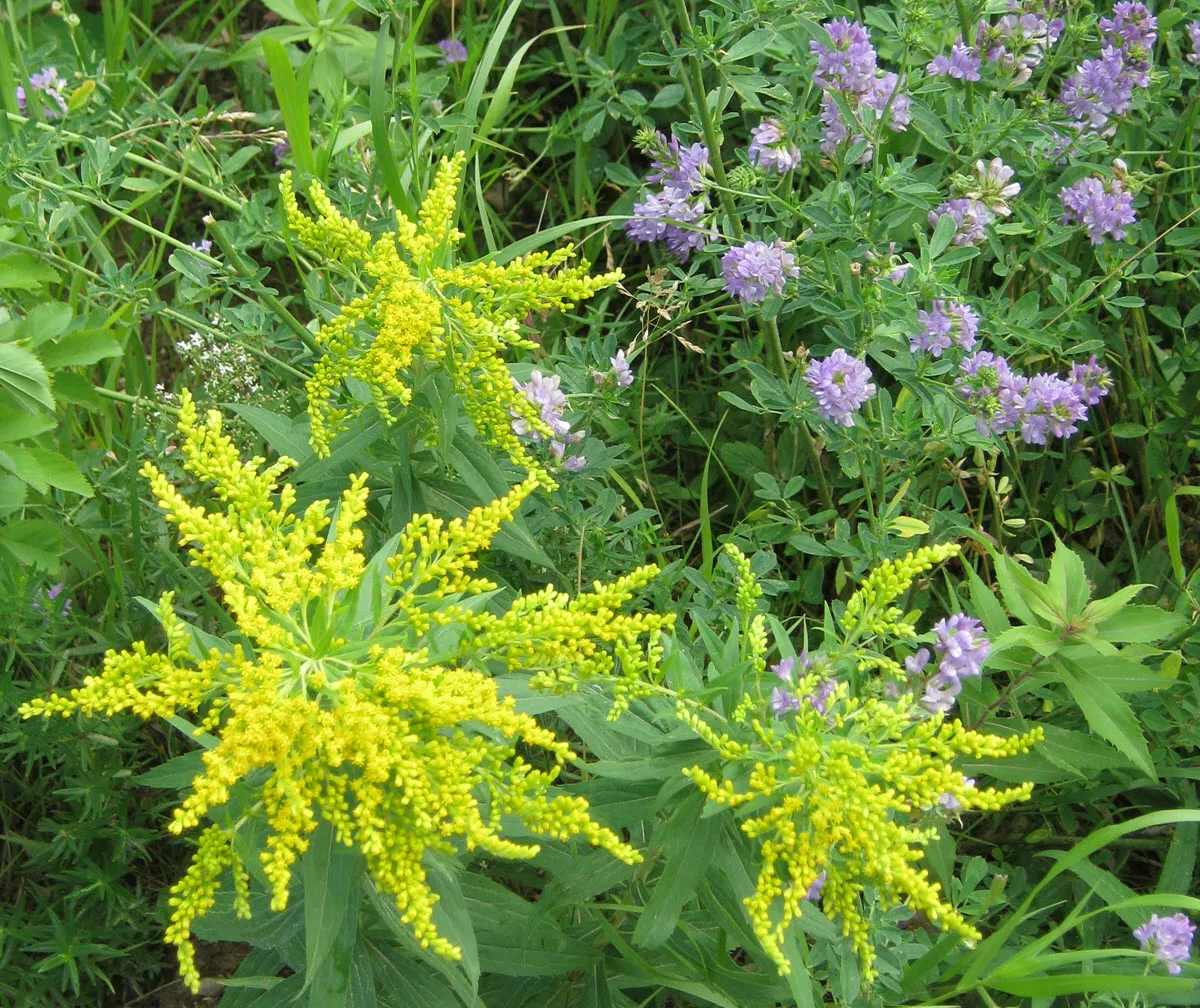Goldenrod's Botanical name -Solidago Canadensis- Solidago is from SOLIDUS, meaning healthy and strong; and AGO, to make whole or solid which refer back to it's ability to repair torn flesh. It's flowers and leaves can be made into a poultice or infused into an oil and used for wounds or burns.

The goldenrod is part of the sunflower family (Asteraceae). Solidago canadensis is a native, warm-season, long-lived perennial that spreads by rhizomes and forms large, dense patches found here gracing our ditches with it's beautiful burst of yellow flowers.
Goldenrod is often blamed for pollen related allergies but that is impossible for the amount of pollen it produces is very small and is sticky. It's pollen can only be spread by pollinators and not wind. It is only wind-pollinated plants — like ragweed (a plant that blooms at the same time as goldenrod but has a much more irritating pollen), that can cause allergic reactions. So look to plants like ragweed to be the cause of your allergies, not goldenrod.
In fact goldenrod is used in treating the symptom of allergy and other upper respiratory tract conditions plus for treating cold and flu. This can be done as simply as drinking a warm cup of goldenrod tea.
2 Tbsp fresh goldenrod mixture of leaves and flowers chopped (or 1 tsp dried goldenrod)
1 pint of boiling water
Pour boiling water over the leaves and flowers in a cup and let it steep for 20 minutes or let it steep longer for stronger medicinal effects. Six to twelve grams of the plant material taken daily is necessary to prove effective as a therapy.
According to Robert Dale Rogers, herbalist and researcher, goldenrod has 7 times the antioxidant levels of green tea.
It is the constituent rutin, found in goldenrod, which is know for it's antioxidant qualities, and is great for keeping the heart healthy, increasing capillary strength and supporting circulation.
Other qualities that goldenrod has is that of an antiseptic and antimicrobial agent making it good for sore throats. Try some of that warm tea mixed with honey or just gargle with an infusion.
Goldenrod is also considered an aquaretic agent, which promotes the loss of water from the body, causing you to urinate more often. It has been used for medical conditions related to the kidney and bladder, including inflammation of the bladder or urinary tract and kidney stones.

They flower in the late summer and fall and is the choice for building their food supply for the winter.
The goldenrod honey has a wonderful rich flavor and is great on sore throats. 1 or 2 tsp of this honey can be taken daily by pollen allergy sufferers. This will lessen the sensitivity to the pollen.
*Note: This must be raw honey to get the full benefits.

All photos were taken with my Canon PowerShot A495

